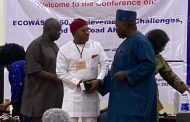
Faces of poverty in Nigeria
A Global Multi-Dimensional Poverty Index , (GMPI) carried out over a decade, (2004 – 2014) by the Oxford Poverty and Human Development Initiative at Oxford University in the United Kingdom has shown a poverty index of 46% of Nigerians living below the national poverty line. This contrasts with a similar report in 2014 by the World Bank which claimed that only 33% of Nigerians belonged to the bracket of the poor.
As far as it concerns Nigeria out of the 103 countries surveyed, the poverty rate for each of the state of the federation and Abuja goes as follows.
- Lagos – 8. 5%
- Osun – 9%
- Anambra – 11.2%
- Ekiti – 12.9%
- Edo – 19.2%
- Imo – 19.8%
- Abia – 21. 0%
FCT (Abuja) 23.5
- Rivers – 21.1%
- Kwara – 23.7%
- Akwa Ibom – 23.8%
- Delta – 25.1%
- Ogun – 26.1%
- Kogi – 26.4%
- Ondo – 27.9%
- Enugu – 28.8%
- Bayelsa – 29.0%
- Oyo – 29.4%
- Calabar – 33. 4%
- Plateau – 51.6%
- Nasarawa – 52.4%
- Ebonyi – 56. 0%
- Kaduna – 56. 5%
- Adamawa – 59.0%
- Benue – 59.2%
- Niger – 61. 2%
- Borno – 70.1 %
- Kano – 76.4%
- Gombe – 76.9%
- Taraba – 77. 7%
- Katsina – 82.2%
- Sokoto – 85.3%
- Kebbi -86.0%
- Bauchi – 86.6%
- Jigawa – 88. 4%
- Yobe – 90.2%
- Zamfara – 91.9%

Muhammadu Sanusi 11, Emir of Kano and a former CBN Governor
At the regional level, the northern half goes as follows: North East is 76. 8%, the North Central is 45.7% and the North West is 80.9%. The Southern half follows this pattern: South East – 27.36%, South South – 25.2% and South West – 19.3%.
What do all these say about Nigeria, the violence and the overall instability, what should be done and by who? That’s all part of a big question! It is not clear whether a fore knowledge of this report informed the statement credited to the Emir of Kano earlier today in Kaduna to the effect that the northern part would be the poorest were Nigeria to be broken into its regional components. Why the north is like that after so many years in control of power at the centre is the puzzle that her very best intellectuals might be assigned to crack as the basis for a new north. The figures above show the kind of gap between the north and the southern parts of the country that Alhaji Balarabe Musa described as a threat to national security in a recent interview. The north as an academic, political and academic puzzle has not been the past time of her intellectuals unlike in the 1980s when internal criticism was the norm. But new voices are being heard such as the Kano Emir. Recently in a special report, Intervention asked whether the north is a case of Humpty Dumpty which cannot be saved or whether the north is merely undergoing the pangs that preceded rebirth.
It has been frightening that in the entire northern Nigeria, no political leader of note has been heard mentioning anything about industrialisation in their rhetoric. And yet change is trumpeted.




























